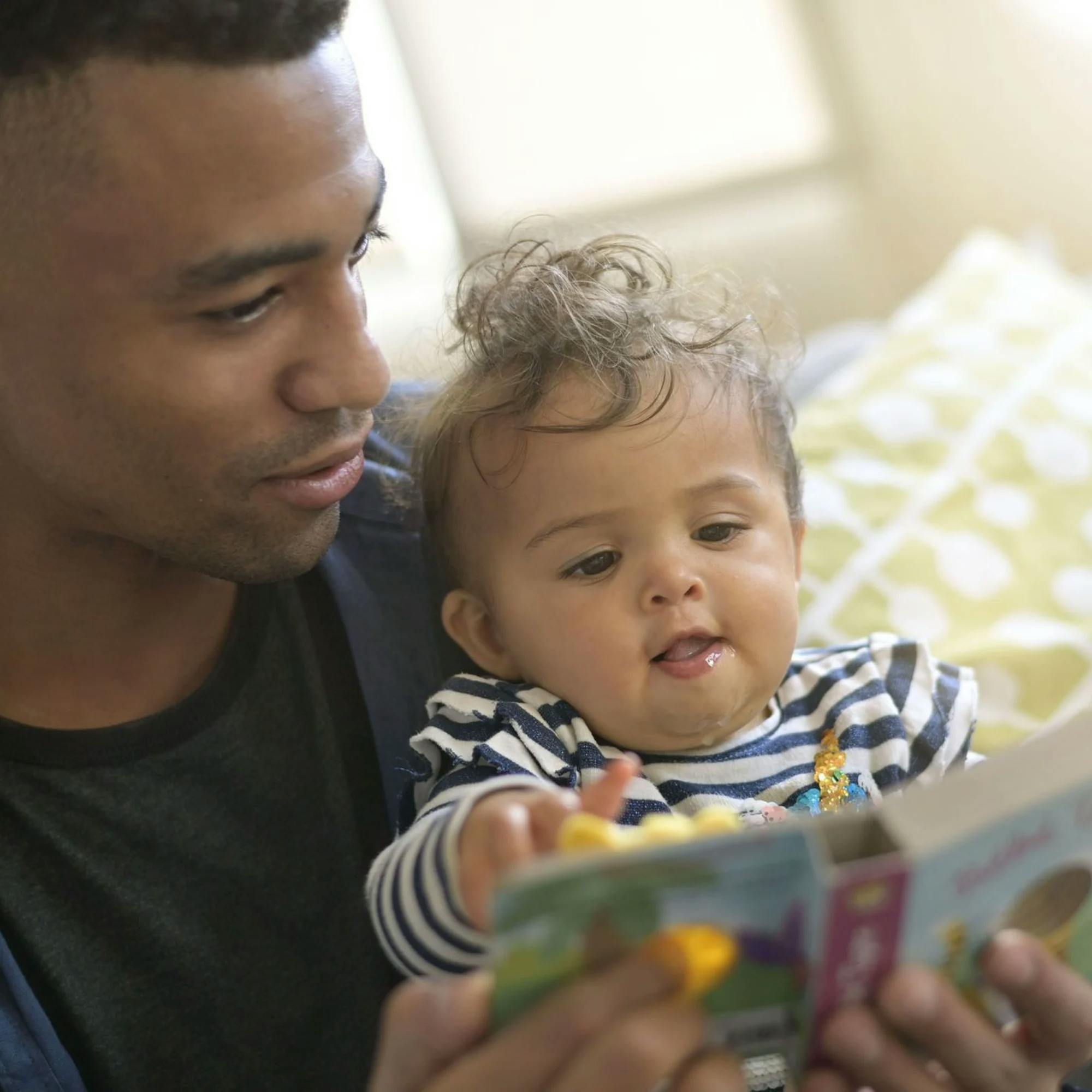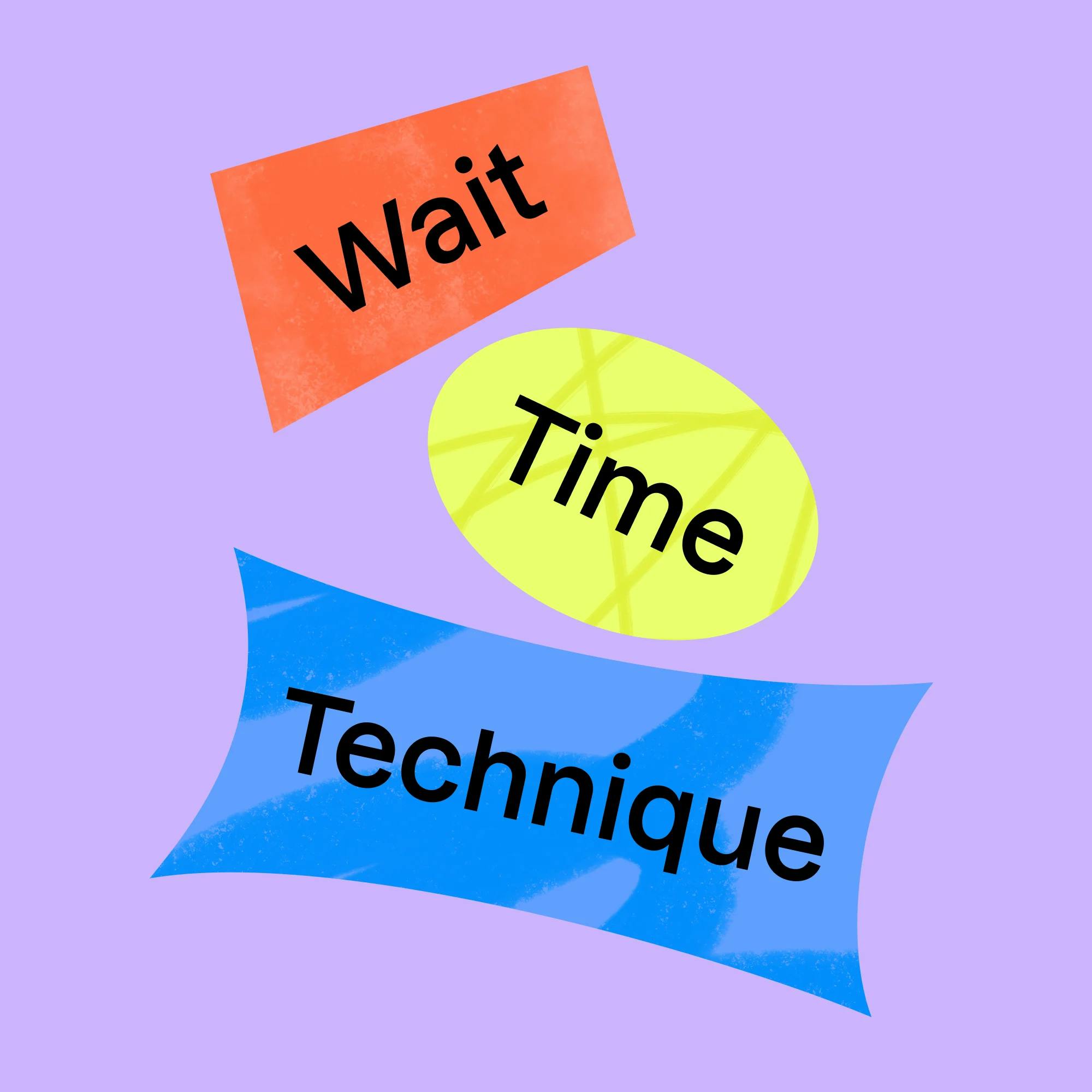
Help Your Child Communicate by Offering Them Choices
 Abby Barnes, M.S., CCC-SLP
Abby Barnes, M.S., CCC-SLP
When a child says their first word, it’s an amazing thing to witness! But sometimes children need a little extra help in learning to talk.
One of the best ways to teach your child to communicate is to offer them choices. Offering a choice helps your child use more words or otherwise communicate what they want. Let’s look at how to use this easy speech therapy technique at home.
Is your child on track?
Take our free screener to learn more about your child's development and whether a speech evaluation is recommended.
 Screener for children
Screener for childrenWhy using choices gets your child talking
When it comes to language development, offering choices works so well because it's a structured context for communication, rather than being open-ended.
Take a second and think about the types of questions you ask your child. Maybe “What would you like to eat?,” “What book would you like to read?,” or that famous question: “What do you want?”
While these types of questions may seem simple to us, they're open-ended questions with many possible answers. Your child may not yet have the words to independently give an answer. That’s why offering choices is so powerful. It makes figuring out what a toddler needs less of a guessing game. And it shows your child that communication helps them get what they want.
Once you start using this strategy at home, the puzzle pieces of communication will begin to fit together!


How to offer your child choices to help them communicate
Let’s look at an example of how you can use this speech therapy strategy at home.
1. First, ask your child a simple question during play, such as, “What toy would you like?”
2. After you ask the question, present two options to your child, such as a toy bus and a puzzle.
3. Gesture to the bus and say “Bus,” then gesture to the puzzle and say, “Or puzzle?”
4. Wait expectantly and watch how your child tries to communicate. It may be through gestures, like pointing to the toy they want. Or they might use a verbalization--a sound or a word--to signal which item they prefer.
When we keep communication requests simple and structured, children are more likely to successfully express their thoughts and ideas.

Help your child use gestures, then sounds, to communicate
Many children will use gestures before regularly making speech sounds, also called verbalizations. This is normal in the progression of language development. Gestures, like pointing, typically develop before talking.
If your child doesn't usually verbalize or imitate many words, then expect gestures from them right now. That’s OK--pointing is communication! Make sure to praise your child for trying to communicate. This feeling of achievement will encourage your child to communicate more and begin trying to verbalize.
Gestures, like pointing, typically develop before talking. Gesturing is communication!
Once your child is consistently using gestures when you give them two choices, it’s a good time to start focusing on their verbalizations. When you offer choices, emphasize each word a couple of times. If your child points to an item (the toy bus, for example), model it for them and prompt your child to imitate. You can say, “Bus! You want the bus! You say it--bus!” Then pause and wait for your child’s response.
Here's another speech therapy tip. If your child isn't trying to imitate the words you say, give them something simpler to imitate, such as the first sound of the word. In the example above, prompt your child to imitate the /b/ sound, instead of saying the word “bus.”
Keep your child's language skills growing
As always, children respond to positivity. Get excited and cheer on your child each time they verbalize, even if they're only saying part of the word. Children’s coordination and motor-planning for speech can take some time to develop. Over time, your child’s sound productions will begin to sound more like true words.
If your little one is already imitating words right and left, that’s wonderful! Now, see if they’ll continue imitating words after you verbally present two choices. So, you can ask them if they want to play with their toy bus or a puzzle, without showing them the two options.
Another way to increase the challenge is to prompt them to use two-word phrases, such as “Bus please!” or “More bus!”


How often should you give your child choices?
The more you practice speech and language at home, the better! When you frequently offer choices, your child will quickly gain confidence in their communication skills. That will really get language development rolling. Your child will soon begin to use gestures and verbalizations on their own, without any prompting from you.
This is why it's so important to practice, practice, practice. Give your child at least 30 to 40 opportunities to make choices throughout their day. That may seem like a lot, but you can do it! Communication practice is easy to fit into your daily routine. You can offer choices in everyday situations, such as meals, bath time, or during play. Here are some examples:
Getting dressed? If so, what should we put on first: “Pants, or shirt?”
Ready to play? If so: “Blocks, or trains?”
At the playground? "Swings, or slide?"
Online speech therapy can teach you how to help your child
Expressable speech therapists work with toddlers, preschoolers, and older kids to help them communicate more clearly. Speech therapy starts with an evaluation to determine the child’s current communication strengths and differences. From there, the speech therapist creates a treatment plan with personalized goals. Fun, play-based sessions focus on helping children meet these goals, as well as teaching families how to help with practice at home.
Early intervention is the best thing you can do for a child who is delayed in their communication skills. The sooner speech therapy begins, the sooner the child can begin building their skills and meeting more milestones.
Take our free online speech screener
If your child isn't meeting expected communication milestones for their age, don’t hesitate to reach out to us. You can take our free online screener to see if your child would benefit from an evaluation. Or, take the next step and get matched with one of our speech therapists. We're here to support you and your child every step of the way.
How Expressable Can Help
Concerned your child isn't reaching age-expected milestones? Looking for communication support from a professional? Expressable is a national online speech therapy practice serving children and adults. We treat all major areas of communication and feeding, offer flexible hours including evenings and weekends, and accept most major health insurance plans. We’re proud to have earned more than 3,000 5-star reviews from our clients (4.9/5 average).
Our therapy model is centered on parent and caregiver involvement. Research proves that empowering caregivers to participate in their loved one’s therapy leads to better outcomes. That’s why we combine live, 1-on-1 speech therapy with personalized education and home practice activities for faster progress.
Communication is more than words. It’s how we share how we feel and show who we are. We’re here to help you or your child do just that.











